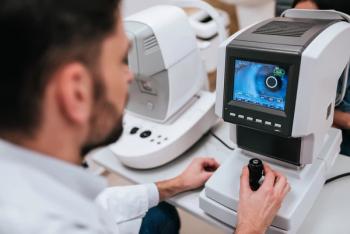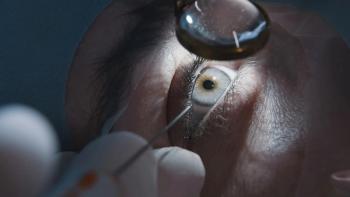
Three-pronged approach required for diplopia
Diplopia is a common presenting complaint that has multiple underlying causes, both neurogenic and myogenic.
The first task is to determine whether the diplopia is monocular or binocular because the underlying causes and treatments are very different. Monocular diplopia usually occurs due to an uncorrected refractive error or corneal disorder that may be treated with refraction. "Other causes can be cataracts, scarring, or a dislocated lens, but monocular diplopia is rarely due to a nerve or muscle abnormality," he said.
Binocular diplopia is the more complex problem. The most common causes are cranial nerve palsy (cranial nerves III, IV, or VI), myasthenia gravis, thyroid-related ophthalmopathy, and orbital tumor.
"Approach the patient by taking a good history, measuring motility by a cover test in the seven positions of gaze, and evaluating associated findings, such as redness, ptosis, proptosis, pupillary abnormalities, and involvement of cranial nerves V and VII," Dr. Mitchell suggested. "Lab tests and imaging studies can help you home in on the right diagnosis."
Ophthalmoscopy is useful for noting any papilledema. Other clinical signs to look for include lid lag, lid retraction, and lid fatigue.
Diagnosing nerve palsies
Cover testing in seven positions of gaze is essential for diagnosing cranial nerve palsy. This test will reveal patterns of muscle weakness that directly correlate with cranial nerves III, IV and VI. Specifically:
Most cranial nerve palsies are ischemic in nature and self-resolve within 3 months. One caution: A third-nerve palsy that presents with pupil dilation and diplopia is a medical emergency, because this usually means an aneurysm at the posterior communicating artery. "These patients should undergo an MRI [magnetic resonance imaging] or MRA [magnetic resonance angiography] study that same day," Dr. Mitchell said.
Cancer or a compressive lesion should always be considered in non-resolving cranial nerve palsy or when two or more nerves are involved.
Myasthenia gravis
Ocular signs are the initial finding in some 75% of myasthenia gravis cases.1 Also, ocular findings are the only signs in more than half the cases of myasthenia gravis.1
"Consider myasthenia gravis in any patient presenting with diplopia, even in those with an isolated cranial nerve palsy pattern," Dr. Mitchell said.
A diurnal variation in diplopia-worsening during the day-is another common manifestation of myasthenia gravis. So, optometrists should question patients about patterns of diplopia.
Laboratory testing and electromyography can confirm the diagnosis of myasthenia gravis. Treatment for this neuromuscular disorder manages the autoimmune response to minimize symptoms, so optometrists should refer these patients to a neurologist.
Newsletter
Want more insights like this? Subscribe to Optometry Times and get clinical pearls and practice tips delivered straight to your inbox.





